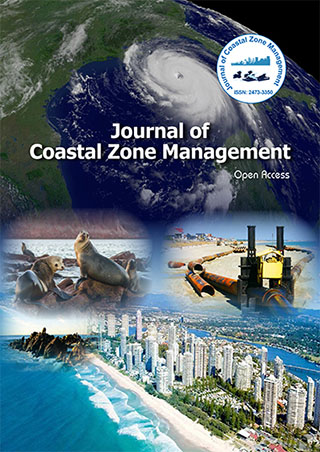Indexed In
- SafetyLit
- RefSeek
- Hamdard University
- EBSCO A-Z
- OCLC- WorldCat
- Publons
Useful Links
Share This Page
Journal Flyer

Open Access Journals
- Agri and Aquaculture
- Biochemistry
- Bioinformatics & Systems Biology
- Business & Management
- Chemistry
- Clinical Sciences
- Engineering
- Food & Nutrition
- General Science
- Genetics & Molecular Biology
- Immunology & Microbiology
- Medical Sciences
- Neuroscience & Psychology
- Nursing & Health Care
- Pharmaceutical Sciences
Abstract
Multi Layer Spatial Analysis for Demersal Shrimp Fishery and Sst Warming in the Semarang Coastal Waters
Agus Hartoko and Pramono Wibowo
Semarang coastal waters is part of coastal zone at the north coast of Java that is still has their characters for coastal demersal fishery. It was known for a long time before, that Semarang coastal water is a very good fishing ground especially for some valuable demersal species, such as white shrimp (Penaeus merguiensis), (Metapeneus.sp); flat fishes (3 species); Gastropods : Tiger snails (Babylonia.sp) and Bivalves : Anadara.sp. Some study that had been developed earlier in transforming from individual station data at coastal and seas, into visual-spatial layer in order to give more accurate spatial analysis of multiple parameters in the invisible coastal waters. This study present further development in the analysis of multi-layer spatial analysis. The samples of demersal coastal shrimp fishery and its closely related ecosystem parameters (depth; sediment; salinity) were taken randomly to represent the area of Semarang coastal zone. Field ecosystem and fishery samples data then processed using spatial method known as Kriging, and overlaid on a Landsat_TM satellite data. The study develops especially a multi layer of the field variables approach in order to analyze possible spatial multiple correlations between ecosystem parameter, such as type of bottom sediment, depth, and salinity to spatial distribution of shrimps spatial distribution as to represent demersal coastal fishery. This benthic fishery resources is regarded as the most vulnerable fishery due it’s sensitive character ie. sedentary and limited movement, is a good example to be used to monitor the impact of the environmental changes such global warming and climate change, such as seawater temperature anomaly in Semarang Coastal water (was found 1.39 ºC in March 1983) for the adaptation strategy in the future coastal resources management.
